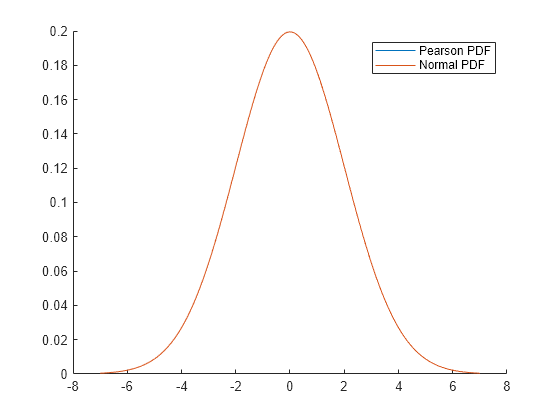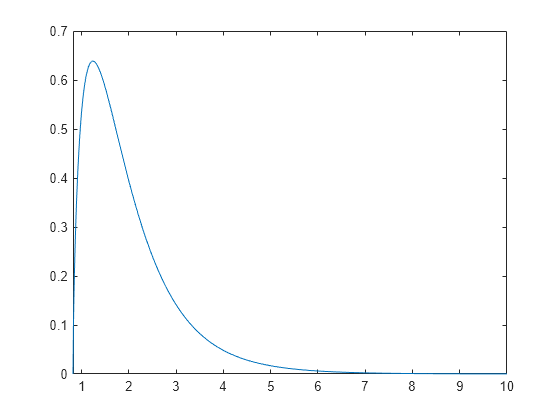pearspdf
Syntax
Description
Examples
Input Arguments
Output Arguments
More About
Alternative Functionality
pearspdf is a function specific to the Pearson distribution.
Statistics and Machine Learning Toolbox™ also offers the generic function pdf, which supports various probability distributions. To use
pdf, specify the probability distribution name and its
parameters.
References
[1] Johnson, Norman Lloyd, et al. "Continuous Univariate Distributions." 2nd ed, vol. 1, Wiley, 1994.
[2] Willink, R. "A Closed-Form Expression for the Pearson Type IV Distribution Function." Australian & New Zealand Journal of Statistics, vol. 50, no. 2, June 2008, pp. 199–205. https://onlinelibrary.wiley.com/doi/10.1111/j.1467-842X.2008.00508.x.
Extended Capabilities
Version History
Introduced in R2023b

